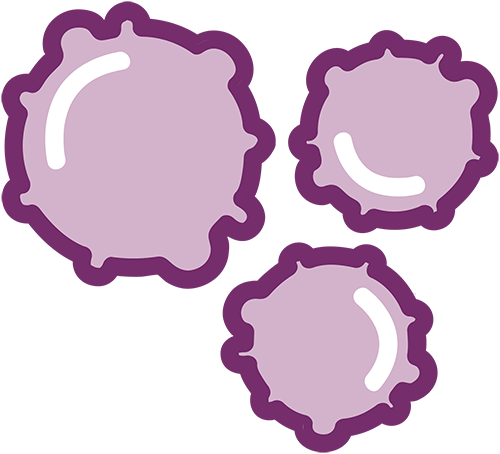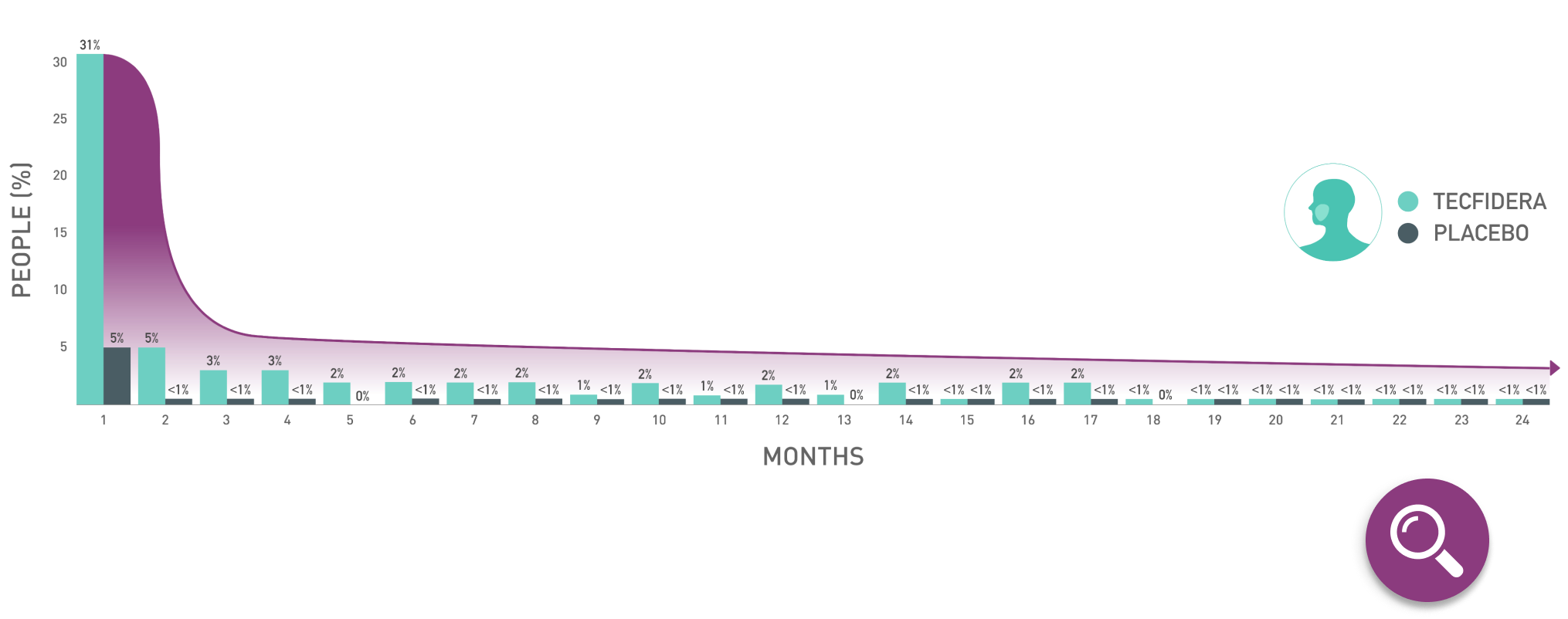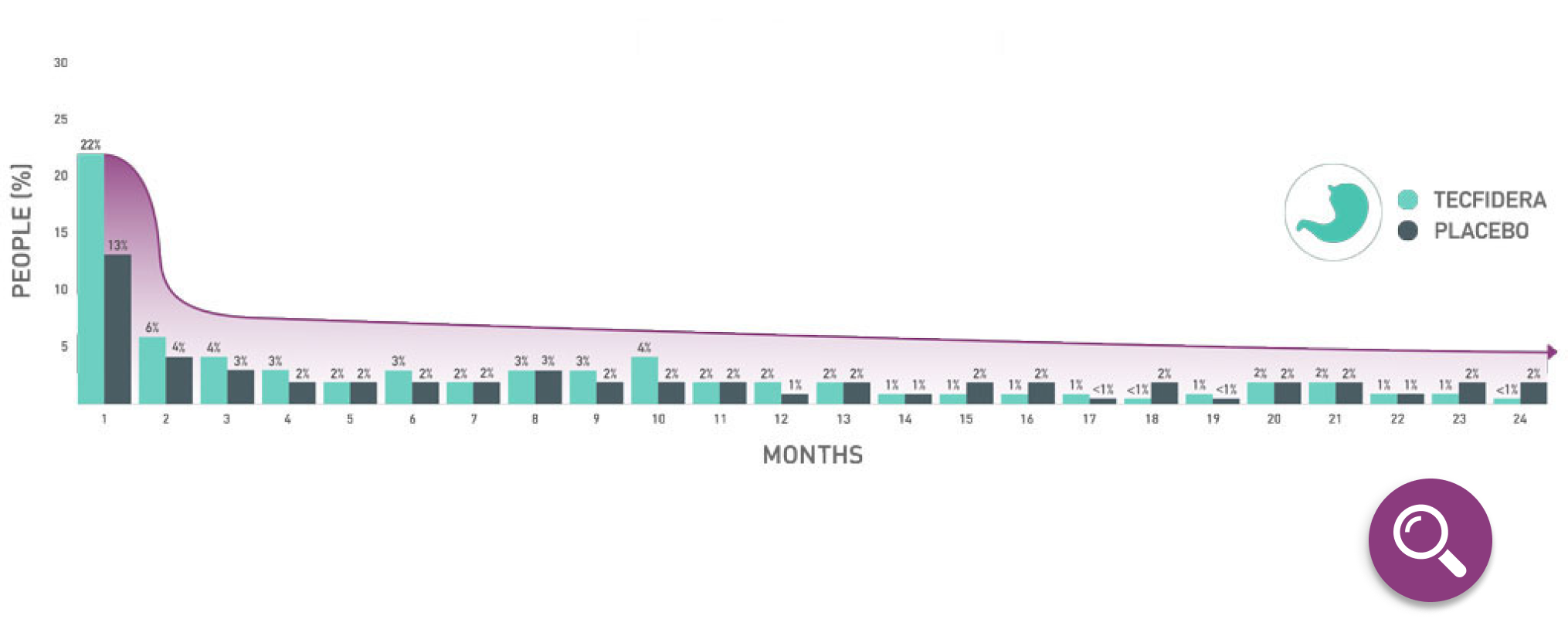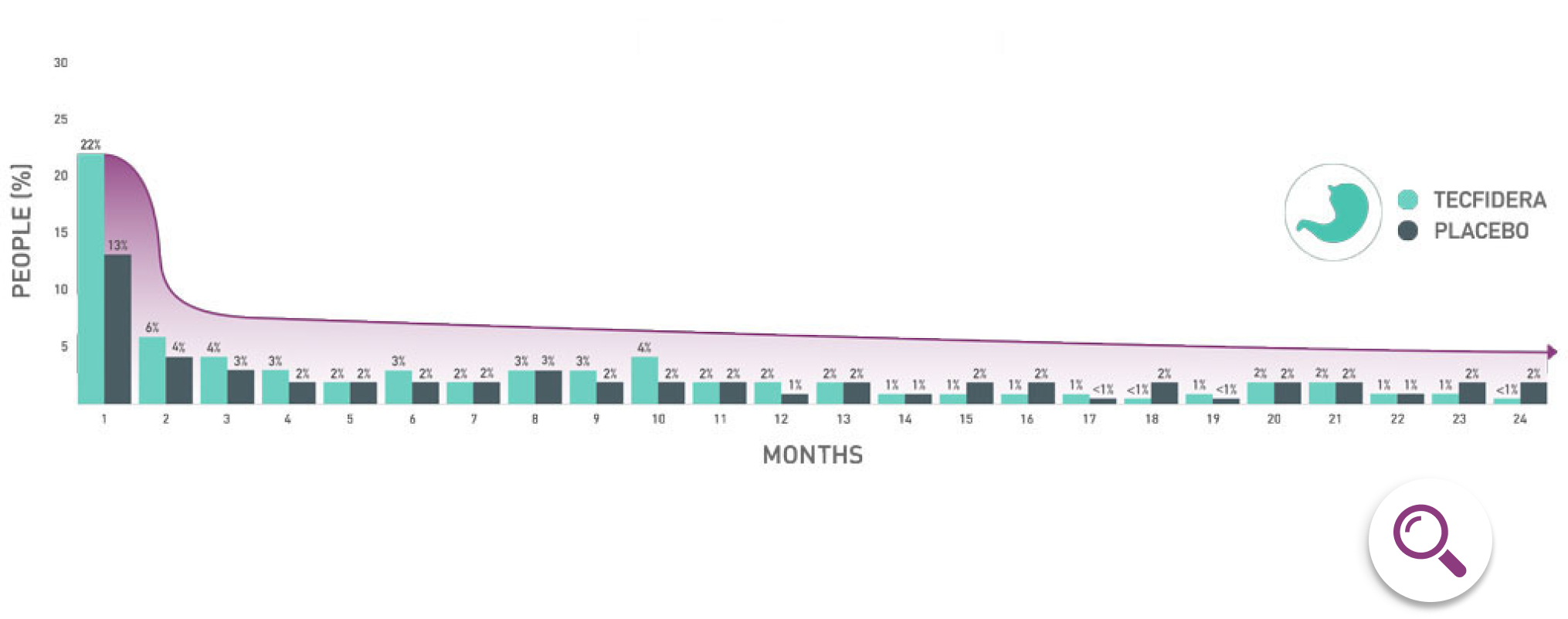Safety and side effects of TECFIDERA
Important topics to discuss with your healthcare provider
Are you and your healthcare provider considering Tecfidera® (dimethyl fumarate)? If so, it’s important to talk with him or her about TECFIDERA safety and side effects. To help prepare you for your discussion, you can learn more below.
Understanding serious side effects
If you and your healthcare provider decide that TECFIDERA is the right treatment for you, it’s important to tell him or her if you experience an allergic reaction to TECFIDERA or any of its ingredients.
Before taking TECFIDERA, it’s also important to talk with your healthcare provider about the serious side effects associated with it. Serious side effects of TECFIDERA include:
Allergic reactions (such as welts, hives, swelling of the face,
lips, mouth or tongue, or difficulty breathing).
Your healthcare provider should do blood tests to check your liver function before you start taking TECFIDERA and during treatment if needed. Tell your healthcare provider right away if you get any symptoms of a liver problem during treatment, including:
- severe tiredness
- loss of appetite
- pain on the right side of your stomach
- dark or brown (tea color) urine
- yellowing of your skin or the white part of your eyes
Your healthcare provider should do a blood test before you start treatment with TECFIDERA and while you’re on therapy.
Herpes zoster infections (commonly known as shingles), including infections of the central nervous system.
Serious gastrointestinal problems, including bleeding, ulcers, blockage, and tears (perforation) of the stomach or intestines. Tell your healthcare provider right away if you have any of these symptoms during treatment:
- stomach-area pain that does not go away
- bright red or black stools (that look like tar)
- severe vomiting
- severe diarrhea
- coughing up blood or blood clots
- vomiting blood or your vomit looks like “coffee grounds”
It’s important to talk with your healthcare provider about the most common side effects of TECFIDERA. Read below to learn about the common side effects found in TECFIDERA’s clinical studies.


Flushing
Symptoms are usually described as redness, itching, or rash.


Stomach problems
Symptoms include nausea, vomiting, diarrhea, stomach pain, or indigestion.
Pregnancy and TECFIDERA
You should always talk to your healthcare provider before taking TECFIDERA if you’re pregnant, interested in becoming pregnant, breastfeeding or planning to breastfeed. That’s because it isn’t known how taking TECFIDERA would affect an unborn baby or if it passes into your breast milk.










